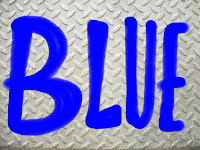I'd like to tell you about "COLOUR" by Victoria Finlay in pictures as far as possible. I'll scatter little digital grafitti sketches on the way through, with my artwork inspired by the book at the end. The graffiti sketches illustrate the colours that Finlay investigates as she travels all around the world to find their origins and history.
This is a paperback, not a Kindle book, and fortunately the print was of a size I could read. I bought it for Dev at Christmas, but I had sneaky plans to read it myself as soon as possible. And what a joy it has been, especially after my problems with my March book. Finlay is a journalist, and she really knows how to write a readable book on an unusual topic.
If, as an artist you are interested in colour - and how can you not be - then you will love this book. It's even better than I expected, and how often can you say that of a book?
The first decision I made was that I was allowed to write in it. I know I'm a big girl now, but the rules of childhood start to echo in the brain as soon as a pen gets anywhere near a book, but I was strong and scribbled as much as I liked.
From this photo of the contents page you can see the structure of the book. I realised that each chapter stood alone, and that I didn't need to take them in order, and I numbered the order of the colours as I read about them.
 I planned to read about one colour at a time and alternate the book with a novel, but I became so involved that I couldn't stop and read the whole book before moving on to my May novel. But it is the type of book you can pick up now and then to read about one of the colours.
I planned to read about one colour at a time and alternate the book with a novel, but I became so involved that I couldn't stop and read the whole book before moving on to my May novel. But it is the type of book you can pick up now and then to read about one of the colours.The preface is fairly technical and a little hard going, but very worth the effort of reading it to set the scene for the book itself. This is such good writing and easy reading - Victoria Finlay is a reporter and knows how to interest the reader.



Black and Brown are dealt with together in the same chapter, and these were my fifth choice of colour because I thought, quite wrongly, that there wouldn't be too much of interest in reading about these colours. What do I know! I would never have expected to be reading about Egyptian mummys in the section about Brown.
Obviously the subject of charcoal came up in the Black chapter, and I didn't know that the ancient charcoal willow is quite a different tree from our popular weeping willow which was only imported into the country in the eighteenth century.
There is a surprise in every chapter. I've been reminded of things I knew - I did know that the cochineal I used to use for making pink cake mix was from an insect, but I was surprised that it was so interesting to read about the cochineal bug. I also learnt things I didn't know, enjoyed the stories she told and was surprised that a writer could make me chuckle so much just talking about colour.
The section on Yellow, entranced me, with its stories about saffron. I knew saffron was yellow and often wondered how Saffron Walden in Essex got its name - sadly there are no Essex saffron fields now. The images Finlay brought into my mind of saffron fields in other parts of the world are still a pleasure in my mind.
The saffron fields of purple flowers open for one day only and must be picked in the morning, the yellow pistils most carefully removed and the purple flowers thrown away. Even the heaps of discarded flowers must be beautiful.
Now for my artwork inspired by the book. When I thought about representing the book in a single painting, I realised that although I enjoyed all of it, the chapter that had left a lasting impression on me was the first one I read - Ochre, in all its different shades of colour, and particularly the cave paintings of Australia.
This is not a copy of the cave painting, it is inspired by it, and is a combination of digital background with the collaged fish drawn with brown Pitt Artist's pen and coloured with Inktense pencils. I wanted to use the blue and ochre together for the contrast. I have used the general idea of the fish, but adapted their shapes to make the picture my own. I'm quite pleased with it, and it will be a happy memory of the book.












































